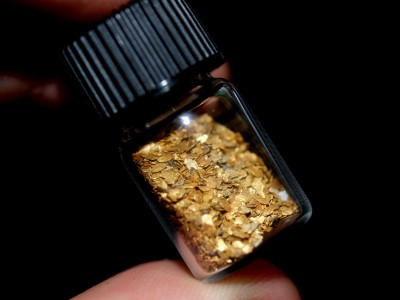Gold has likely been mined in Haiti by local villagers for thousands of years. Historic artifacts from the region show that gold was valued in the cultures here just like it was around the world. Used for art and jewelry, it was the arrival of the Spanish explorers to this region that brought a large interest in gold mining to the entire Caribbean region.
As with so many other countries in the region, there are considerable precious metal resources in Haiti.
The Spanish Arrival in Haiti
In 1492, Christopher Columbus made his second land-fall in the New World, arriving in present-day Haiti and the Dominican Republic. He would call the island “Hispaniola”, and quickly set out to find riches to repay his debt to the Spanish monarchs who funded his expeditions.
There was a large population of Taino/Arawak people who lived on the island, and they welcomed and befriended the Spanish. The Taino gave them gifts of gold jewelry, so the Spanish thought that Hispaniola was the motherlode of gold they were hoping to find.
The sad history of the Spanish conquest was the eventual enslavement of many of the local villagers in the region. The Taino people were used to work many mines in the 1520s, and many of the rivers in Haiti were placer mined for gold.
 Although there was certainly gold to be found in Haiti, the deposits were not nearly as rich as some other places in Central America.
Although there was certainly gold to be found in Haiti, the deposits were not nearly as rich as some other places in Central America.
The Spanish soon decided that Hispaniola would not provide the riches in gold they expected, and so began to cultivate the land into a farming region. The goal was to provide food to be sold to the Spanish in other areas of the Caribbean and Central America. Sugar cane was introduced as a crop, in addition to tobacco and coffee, and regular food crops for Spanish settlers.
Spanish settlements were being established in other areas of the Caribbean, Central and South America and those settlers found it more economical to provide their own food. The Spanish realized that agriculture was not the answer either, and began to lose interest in Hispaniola, and moved on to the rich silver and gold mines of Mexico.
Current Gold Mining in Haiti
It was not until the 20th century that the mining industry began to prosper again in Haiti.
In the 1970s, United Nations geologists documented significant pockets of gold and copper, but foreign investors were not willing to risk cash where instability had long discouraged outside investment. As one of the poorest nation in the western hemisphere, corruption and instability are simply a part of life in Haiti, and it affects the business opportunities to a large extent.
After the catastrophic 2010 earthquake, investors were betting that the $10 billion in foreign assistance promised for earthquake recovery would force change and accountability. The eyes of the world would focus on the Haitian government, and prevent mismanagement of the funds meant to benefit the poor and homeless of Haiti.
Haiti’s geological vulnerability is caused by tectonic plates that squeeze the island with the devastating consequences of death and destruction from violent earthquakes. But the cracks between those shifting, colliding plates may also bring form veins of gold, silver, and copper that are pushed up from the core of the planet.
In 2012, geologists examined depth and strike reports and estimated a yield of at least 1 million ounces of gold at two sites. They also believe that more than 1 million tons of copper lies in just one area under exploration. Modern mining methods can exploit deposits that were unknown or unprofitable to the early miners.
Three firms are considering mining in Haiti, but so far only SOMINE has full concessions to take the metals out of the mountains. In exchange for permit fees, SOMINE committed to spend $2.25 million in the first two years and pay $1.8 million after a feasibility study.
Also Read: Gold Mining in the Dominican Republic
And: Cuba’s Mining and Prospecting Areas
And: Gold Mining in Puerto Rico
Though the terms are generous, there is plenty to be concerned about. Haiti’s government is reportedly one of the most corrupt in the world, and the mines would be regulated by government officials. These officials would be responsible for enforcing environmental, mining and corporate laws, but at this point those officials don’t exist, and there are no plans and no budget for hiring them.
The irony of mineral wealth is that low-income countries, such as Haiti whose citizens live on little more than $1 a day, have weak or oppressive governments that are unlikely to manage these resources in the best interest of the citizens. Still, any large-scale mining operations would certainly provide much needed employment.
Latin America Gold Map







